We had the privilege to get one of the first LCLC coolers from Asetek. Low Cost Liquid Cooling is a new concept where you get a water pump in the base of your water block. The unit we tested today can cool a graphics card as well, and we used an OCZ 8800 GTX.
You can cool both a Core 2 Quad QX6700 and a high end graphics card such as the G80. You can even overclock both the CPU and the graphics card and have almost completely silent cooling. All you need is a 12 cm radiator and a 12 cm fan to cool out the situation.
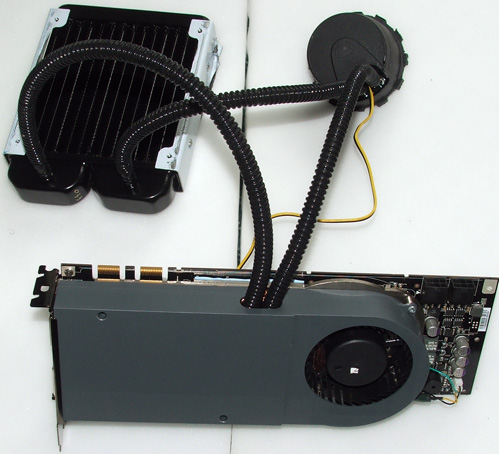
It is silent, it is small, and it works beautifully.
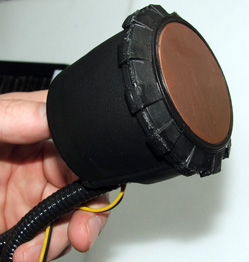
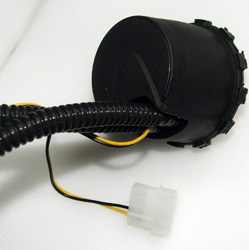
The small CPU block is actually the most important part. A silent and powerful water pump is hidden inside. A big copper base is much bigger than the CPU itself and it can remove heat effectively.
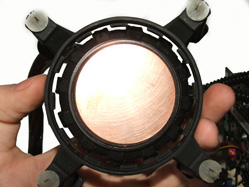
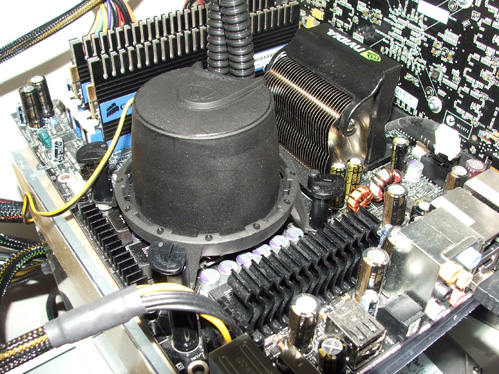
Mounting is easy and we got the mounting brackets for Intel's 775 socket. It is an updated Intel mounting push in mechanism. All you have to do is to turn a CPU block and lock it to a base of the cooler. Once you lock the cooler in this mechanism, you are good to go, but you have to plug the cooler retention buttons in the holes on the motherboard. The graphics cooler is also easy to mount, just a few screws and that's it.
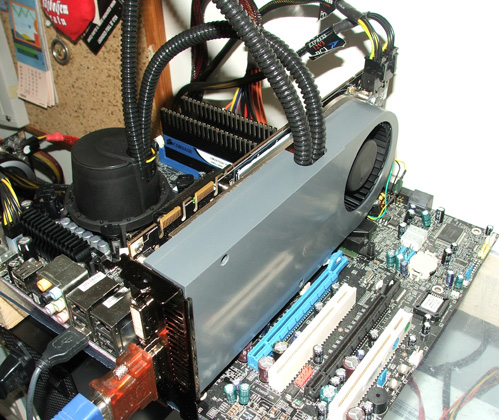
We mounted the water cooling system on our EVGA 680i motherboard using an Intel QX6700 processor. Together with the Geforce 8800GTX heat dissipation exceeds 200W but the cooler can easily cope with it. We tried to push this Asatek cooling with overclocking and even more watts. Again, the cooler was able to cope with it.
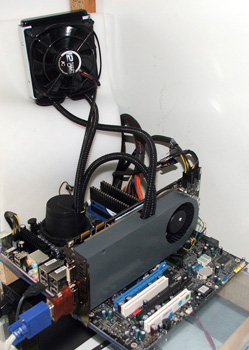
To be on the safe side we installed an Artic Cooling 12cm fan on the radiator.
We overclocked Intel's QX6700 from its default 2.66 GHz to 3.4 GHz and the system was stable at all times. At the same time we overclocked the OCZ Geforce 8800 GTX to 618 MHz core and 1836 MHz memory. The system was also stable at all times.
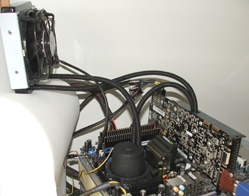
The temperature on the CPU was at a very acceptable 56 Celsius, while the overclocked GPU worked at 75 degrees Celsius. The non-overclocked Geforce 8800 GTX worked at 61 degrees Celsius.
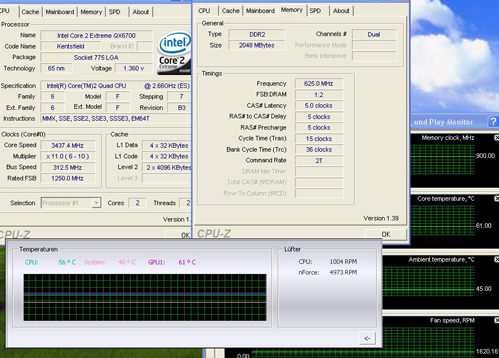
On a maximum overclock the CPU temperature rose to 61, and we are talking about the maximum load after 3Dmark06. The graphics card temperature never exceeded 75 degrees Celsius.
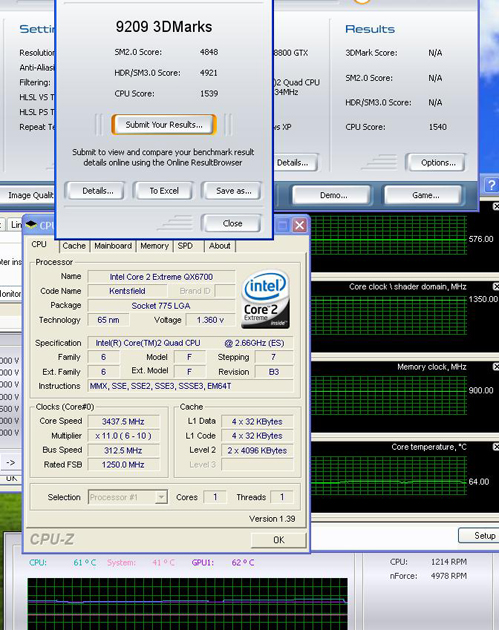
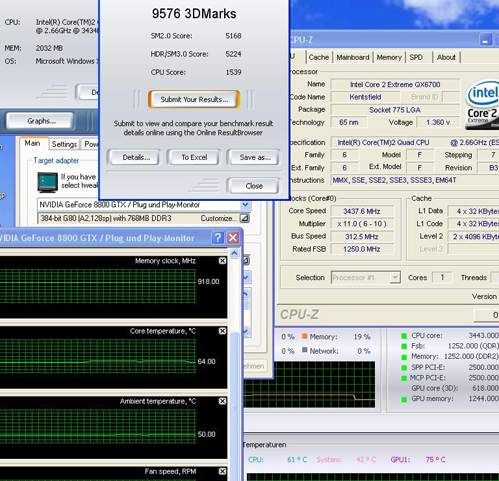
Conclusion
Unfortunately this thing will never hit retail. This is an OEM product only, and some big OEM's will start using them in the second part of the year. The good news it that it works silently and it can overclock a Quad core to 3.4 GHz while cooling an overclocked Geforce 8800 GTX at the same time.
We are working on a more detailed test, but we wanted to share this first experience literally moments after we tried it out. Stay tuned for some more.

